Dragon SpX-13 Cargo Overview
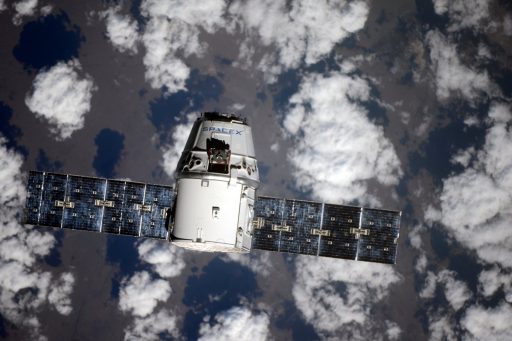
Dragon SpX-13 is the 13th operational mission of the SpaceX Dragon spacecraft to the International Space Station under NASA’s Commercial Resupply Services contract and the fourth Dragon mission in 2017 – marking the first time four Dragons have flown in a calendar year.
Loaded with over two metric tons of cargo, Dragon will be ferrying supplies for the crew and plenty of science experiments as well as two external payloads to the Space Station to track the solar energy input to Earth and monitor the space debris population.
The Dragon SpX-13 mission is part of the CRS-1 contract extension that awarded an additional three flights to Orbital ATK’s Cygnus and SpaceX will be flying under CRS-1 through CRS-20 to bridge a gap until transitioning to the second round of Commercial Resupply Services contracts that cover the Station’s cargo needs through the first half of the 2020s. SpX-13 is the second time a Dragon spacecraft is re-used, employing Dragon C108 that spent 37 days in space as part of the SpX-6 mission in 2015.
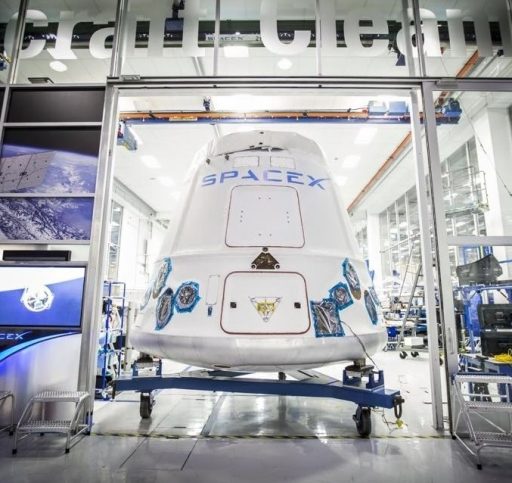
The Dragon capsule is not the only re-use element of the SpX-13 mission since this launch will be the first under CRS to employ a previously used Falcon 9 first stage. Continuing on a path to making re-use missions routine, SpaceX began re-flying first stages in March 2017 and submitted proposals to NASA for extensive reviews of data from previously used stages and life-leader experimentation involving a stage firing up around ten times after completing a particularly challenging mission that left it with maximum damage. Engineering data provided by SpaceX persuaded NASA to opt for ‘flight-proven’ boosters at no to minimal additional risk to the success of the overall mission.
NASA’s engineering reviews cleared Dragon missions to fly on first stages with one prior Low Earth Orbit mission, excluding boosters with more than one mission under their belt and those returning from high-energy missions like Geotransfer deliveries. SpX-13 will use Falcon 9 Booster #1035 that first flew in June 2017 when it helped lift the Dragon SpX-11 spacecraft into orbit, marking the first re-flight of a Dragon capsule.
In total, Dragon SpX-13 is delivering 2,205 Kilograms of cargo to the International Space Station, primarily focused on science and utilization payloads.
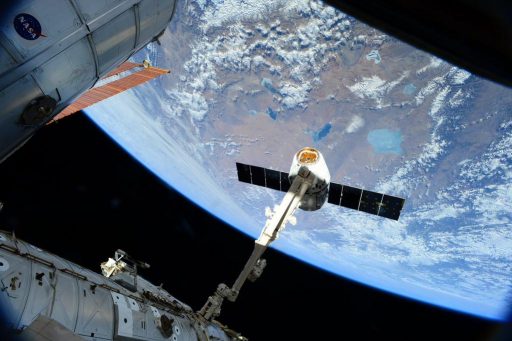
Dragon, given its capability of launching and returning experiments as well as its ability to launch external payloads, is usually tasked with science/utilization-heavy missions compared to Orbital ATK’s Cygnus that does the heavy-lifting on the supplies side with the recent Cygnus OA-8 mission extending the Space Station’s consumables to June 2018.
Packed into the Trunk Section of the SpX-13 Dragon are two new external facilities: TSIS, the Total and Spectral Solar Irradiance Sensor, will be measuring the total solar irradiance and spectrally-separated irradiances arriving at Earth to continue a long-term record of what are considered critical climate variables to understand the total input of energy into the Earth/Atmosphere System.
SDS, the Space Debris Sensor, is one of the largest of its kind ever flown, using different detection methods to provide unprecedented data on the population of micro-debris in the Space Station’s orbital regime and validate sensor designs for future missions exploring other orbital altitudes to help assess risks for satellite missions.
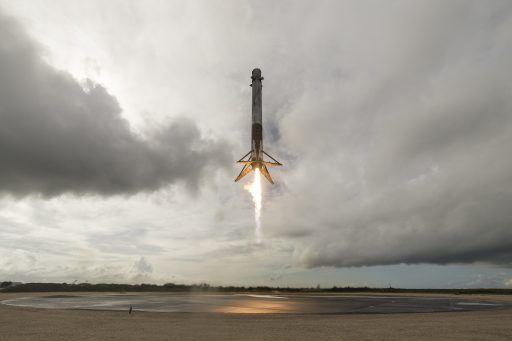
Loaded into the Dragon are a number of experiments from various fields of science and technology, looking into the production of ultra-high-quality optical fibers in the absence of gravity, studying a synthetic bone material that could accelerate bone repair, and looking at the assembly of three-dimensional structures suspended in fluid without the presence of gravity which is relevant for the production of advanced optical materials and electronic components.
Additionally, Dragon SpX-13 will be the next Rodent Research Flight, ferrying forty mice to the Space Station to participate in a study of a novel drug that could combat muscular breakdown in astronauts on long-duration missions and Earth-bound patients with muscle-related diseases and injuries. Twenty of the mice have a return ticket and will ride the SpX-13 Dragon to a parachute-assisted landing in the Pacific Ocean.
- Total Cargo: 2,205 Kilograms
- Pressurized Cargo (with packaging): 1,560 Kilograms
- Science Investigations: 711 Kilograms
- Vehicle Hardware: 189 Kilograms
- Crew Supplies: 490 Kilograms
- Computer Resources: 5 Kilograms
- Spacewalk Equipment: 165 Kilograms
- Unpressurized Cargo: 645 Kilograms
- Pressurized Cargo (with packaging): 1,560 Kilograms
Plant Gravity Perception
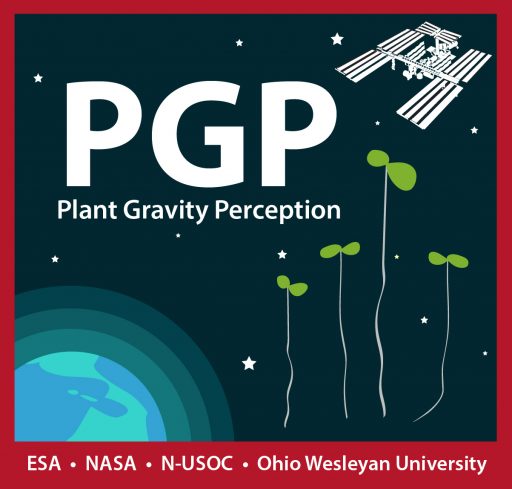
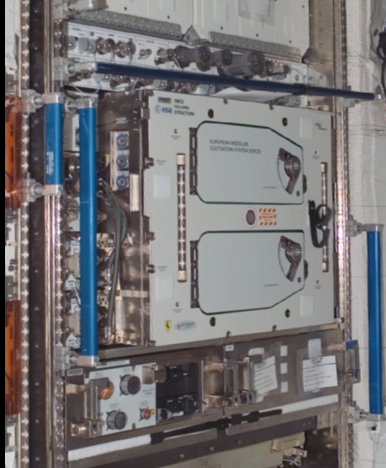
The Plant Gravity Perception (PGP) experiment, also known as Gravity Perception Systems, joins a long line of biology studies using the unique microgravity environment aboard the Space Station to investigate how plants sense and respond to gravity. PGP uses the European Modular Cultivation System (EMCS) to grow normal and mutated forms of Thale cress, a model organism often used in space experiments, to study the plant’s light and gravity perception to inform designers of future space-based plant growth facilities which crews on extended journeys will rely on for food.
Gravity perception is important to plants because they need to send their roots downward into the soil for water and nutrients while the shoots have to be directed upwards towards light for photosynthesis. Previous research has shown that plants use statoliths to sense gravity – small packets filled with starch that settle at the bottom of specialized gravity-sensing cells. However, mutant plants without functional statoliths also show consistent responses to gravity, indicating there is at least one other path for sensing gravity.
This non-statolith gravity sensing system is the focus of PGP, using plants with statoliths and mutant plants that lack the ability to produce starch in microgravity and a simulated gravity environment of varying strength created by a centrifuge. PGP will attempt to test molecular components for contributions to gravity sensing without statolith sedimentation and determine how the multiple gravity sensory systems interact to control the growth response.
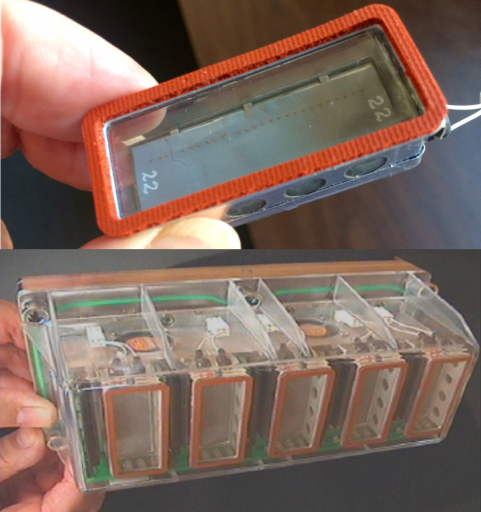
The PGP experiment hardware consists of five seedling growth cassettes in experimental containers. A total of 24 experimental containers are launched, containing dry seeds in 120 cassettes. Eight containers will be part of an experiment run, requiring three experiment runs of five days given the available slots within the EMCS.
Experiments are initiated from the ground with the hydration of seeds to start the germination of plants. The seedlings are initially subjected to a force of 1G which, combined with white LED illumination, will put the developing seedlings into a predictable orientation.
Rotor-mounted cameras are used to monitor plant development and growth at all stages of the experiment with the growth phase allowed to last 84 hours. After this time, the seedlings are exposed to microgravity and unilateral stimulation provided by blue LEDs which will cause the seedlings to re-orient their growth direction. Twelve hours after the start of the stimulation phase, the seedlings are exposed to a range of G-forces from 0.006 to 1 G in the dark while imagery is acquired under infrared illumination. Samples are returned to Earth frozen for detailed laboratory analysis.
Benefits of uncovering the different gravity sensing pathways of plants are directly applicable in space and on Earth. In space, plants will be a critical food and oxygen source for future missions to distant targets – requiring reliable and efficient plant growth facilities. On Earth, crop efficiency depends on the number of plants that can be grown in a given area or volume and thus depends on the shape in which a plant growths based on its gravity and light sensors.
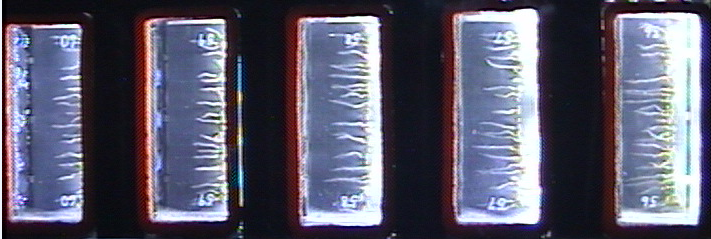
Made In Space Fiber Optics
The Optical Fiber Production in Microgravity experiment, conducted by Made In Space, will look into the merits of manufacturing fiber optic filaments in microgravity which is expected to yield higher optical qualities than Earth-bound production. ZBLAN, a family of heavy-metal fluoride glasses, will be the focus of this experiment. On Earth, when ZBLAN is solidified, its atomic structure tends to form into crystals – a process that is not expected to take place in space and so yield optical filaments with superior optical qualities than the silica used in most fiber optic wires.
Made In Space Fiber Optics is a locker sized payload that will operate for around 20 days to pull fiber optic wire from ZBLAN. The facility will return to Earth aboard Dragon for extensive evaluation of the optical properties of the microgravity-produced fibers. If proven feasible from a technological and economical standpoint, this experiment could lay the foundation for the large-scale manufacture of high-quality fiber optic fiber in orbit.
Advanced Colloids Experiment-Temperature-7
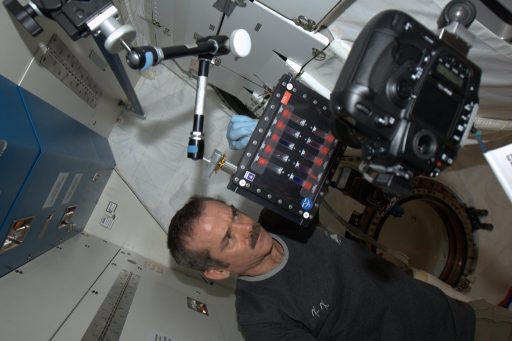
Advanced Colloids Experiment-Temperature-7 (ACE-T7) continues a long line of colloids experiments conducted aboard the International Space Station, leveraging the unique microgravity environment offered on ISS to perform long-term experimentation looking at the behavior of small particles suspended in fluids in the absence of gravity-induced effects (e.g. sedimentation) which typically mask a number of phenomena in experimentation on Earth.
The ACE-T7 study involves the design and assembly of complex three-dimensional structures from small particles suspended in a fluid medium. These self-assembled colloidal structures can be useful in a number of areas including advanced optical elements and electronic components. Without effects of gravity, the experiment will deliver insight into the relation between particle shape and interparticle interactions on the assembly structure and dynamics, answering fundamental questions in condensed matter science.
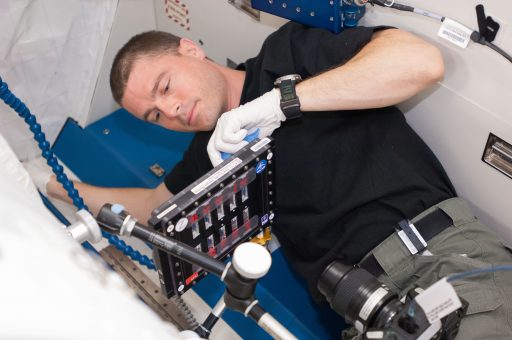
The creation of new functional materials is based on the self-organization of colloids into crystalline structures by means of entropic forces. ACE-T7 uses non-spherical colloids whose phases can be controlled by adding nano-size depletants to the mixture or modifying the temperature of the medium in a particular location to control the particle concentration; three-dimensional imaging will provide detailed insight into the dynamics of particle self-assembly based on the varying external factors.
For ACE-T7, the focus is on studying the crystallization behavior of micron-sized colloidal cubes which are expected to organize in a simple cubic symmetry with the size of the crystal depending on the size of the nano-size depletant. Understanding how crystals of a desired shape and size can be created through processes such as this could allow for new types of photonic crystals, advanced optical components, computing components without bandwidth limitation and other innovative solutions.
Space Tango Payload Card Glucose Test 1 and 2
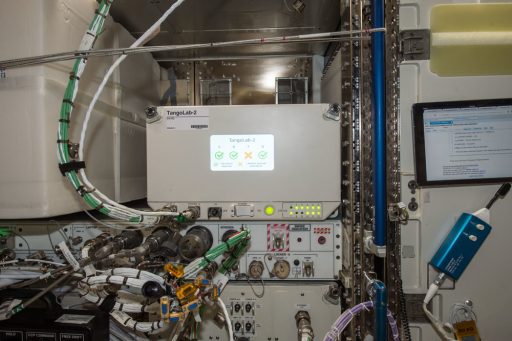
“Deconvolution of Biosensor Glucose Diffusion Contributions in Microgravity” evaluates the accuracy of a wireless, medically implantable glucose biosensor to ease day-to-day diabetes management. Conducting this validation in microgravity allows the glucose diffusion factor to be isolated and monitored to improve the accuracy of the commercial sensors.
Slow glucose transport through human tissues can create delays of up to 20 minutes in real-time monitoring of glucose levels which can have serious secondary complications in patients requiring tight glycemic control. Taking advantage of the slow fluid movement in the microgravity environment, this experiment can provide valuable insight into the role of diffusion in glucose transport and so improve the mathematical models that determine the accuracy of the Glucowizzard measuring device.
The experiment hardware is contained inside a 2U CubeLab, compliant with the Tango Lab where the hardware will operate autonomously to perform the experiment.
Synthetic Bone
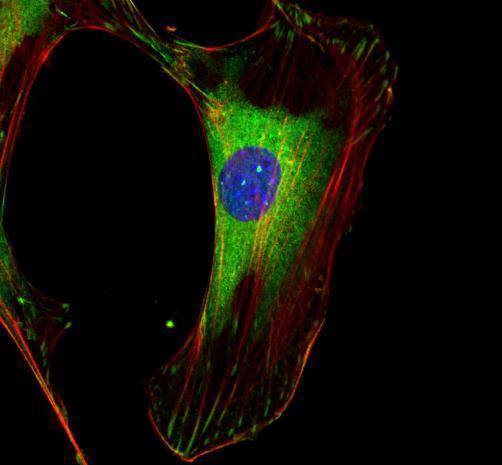
The Synthetic Bone Experiment, going by the full name “Assessing Osteoblast Response to Tetranite™ in Microgravity Conditions to Induce Osteoporosis,” examines the cellular response to a novel bone adhesive in the absence of gravity to evaluate the product for use on Earth to accelerate bone repair. Bone cells will be grown for 20 days in the presence of a commercial bone adhesive and the new product, called Tetranite™, before return to Earth for detailed laboratory analysis to evaluate the performance of the new product.
The product evaluated by this study could fill the sweet spot of an effective yet biocompatible adhesive that can adhere to both metal and bone. Testing has shown TN to be biocompatible in animal experiments and could be useful in a number of areas to fix broken bones, stabilize metallic orthopedic implants and augment the structure of bone in Osteoporosis patients.
Previous spaceflight research has shown that the absence of gravitational forces causes an increase in bone resorption by osteoclasts and a decrease in the cellular integrity of osteoblasts, inducing a loss in bone mass seen in astronauts performing long-duration missions. This accelerated bone loss in space makes ISS an ideal environment for studies looking into bone repair and restructuring. The aim of this particular experiment is to look at the response of osteoblasts, bone-generating cells, to the novel TN agent.
Synthetic Bone tests Mesenchymal Stem Cells and Osteoblasts and uses various analytic tools to assess differentially expressed genes, Osteoblast differentiation and mineralization.
Rodent Research 6
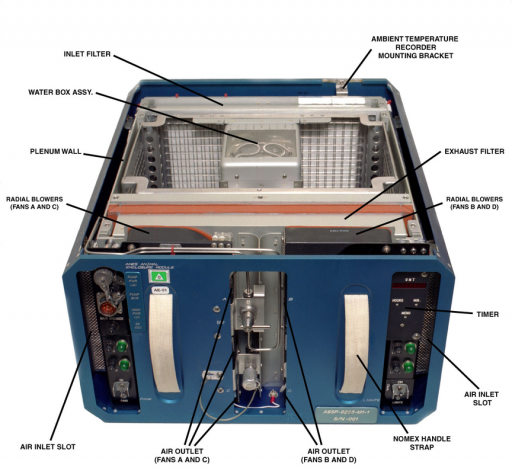
Rodent Research 6 is the seventh Rodent Research Flight to the International Space Station and dedicated to testing a drug delivery system for combating muscular breakdown in spaceflight and muscle-wasting diseases on Earth. The experiment uses forty mice flown to ISS and subjects maintained on Earth, selectively treated with a placebo or with a nanochannel drug delivery chip delivering agents meant to maintain muscle in low-gravity and/or disuse conditions.
RR-6 follows up on a proof-of-concept mission on SpX-4 and rodent science missions on SpX-6, 8, and 10-12 that looked at various research topics such as space-induced rise in intracranial pressure, antibody response, and methods for prevention of skeletal muscle atrophy and osteoporosis.
The drug tested on RR-6 has the potential of slowing and/or reversing space-induced muscle atrophy. A two-pronged approach is taken to understand the mitigating effects of the drug to in-space muscle atrophy and potential improvements in rehabilitation to gravity brought on by the novel drug. In addition to its application in space, the drug may also have applications in ground-based ailments related to muscle atrophy due to prolonged muscular disuse, cancer and aging.
RR-6 involves forty female lab mice (C57BL/6) between 30 and 50 weeks of age that are either sham operated or implanted with vehicle or treatment filled nano delivery systems. Two Rodent Transporters will launch 20 mice each and the transfer to Rodent Habitats will be completed by the ISS crew. One group of mice will live on ISS for 30 days before being transferred back to the transporter for live return to Earth where studies will be performed looking into positive effects of the drug on the re-adaptation to gravity. The other group will continue their residence on ISS until Day 60 when euthanization takes place and samples are harvested and placed in cold stowage. Ground control animals are treated the same as those in orbit, but with a 5-day procedural offset.
SPHERES Tether Slosh
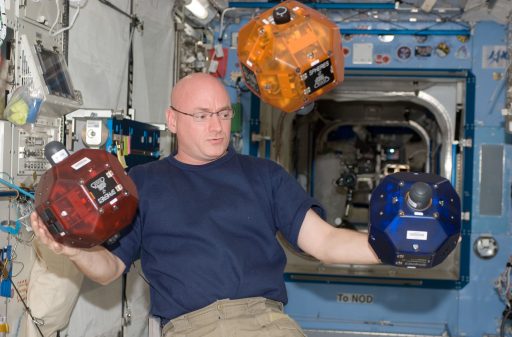
SPHERES Tether Slosh is an extension of the original SPHERES Slosh Experiment and studies fluid dynamics with robotic capabilities aboard the International Space Station to investigate automated strategies for steering passive cargo that contains fluids. e.g. propellant or water. Sloshing of liquid fuels within a spacecraft’s tank can be unpredictable which makes space maneuvers difficult with respect to knowledge of a spacecraft’s precise center of mass at any given time.
SPHERES stands for Synchronized Position Hold, Engage, Reorient, Experimental Satellites and involves two satellites that are used inside the space station to provide a miniature testbed to study maneuvering capabilities and spacecraft measurement systems. These two small satellites are used to study maneuvers in space in miniature inside the ISS.
The SPHERES Tether Slosh experiment uses the two SPHERES robots tethered to an instrumented fluid container to test out strategies for safely steering spacecraft in a practical environment. Steering a passive body in space will be a requirement for moving dead satellites with fuel residuals in their tanks as well as maintaining long-term propellant depots in orbit. This will require detailed predictive knowledge on liquid disturbance and unbalance.
The Tether Slosh experiment employs the two SPHERES robots that pull a liquid-filled slosh tank via a Kevlar tether. The liquid behavior inside the tank is monitored via acceleration sensors and other instrumentation to refine a software algorithm built based on knowledge from previous testing. A number of resources already in place aboard the Space Station are used for the experiment including the two robots and the WISENET – a wireless network of sensor packages (temperature, pressure humidity) deployed in the Columbus module.
